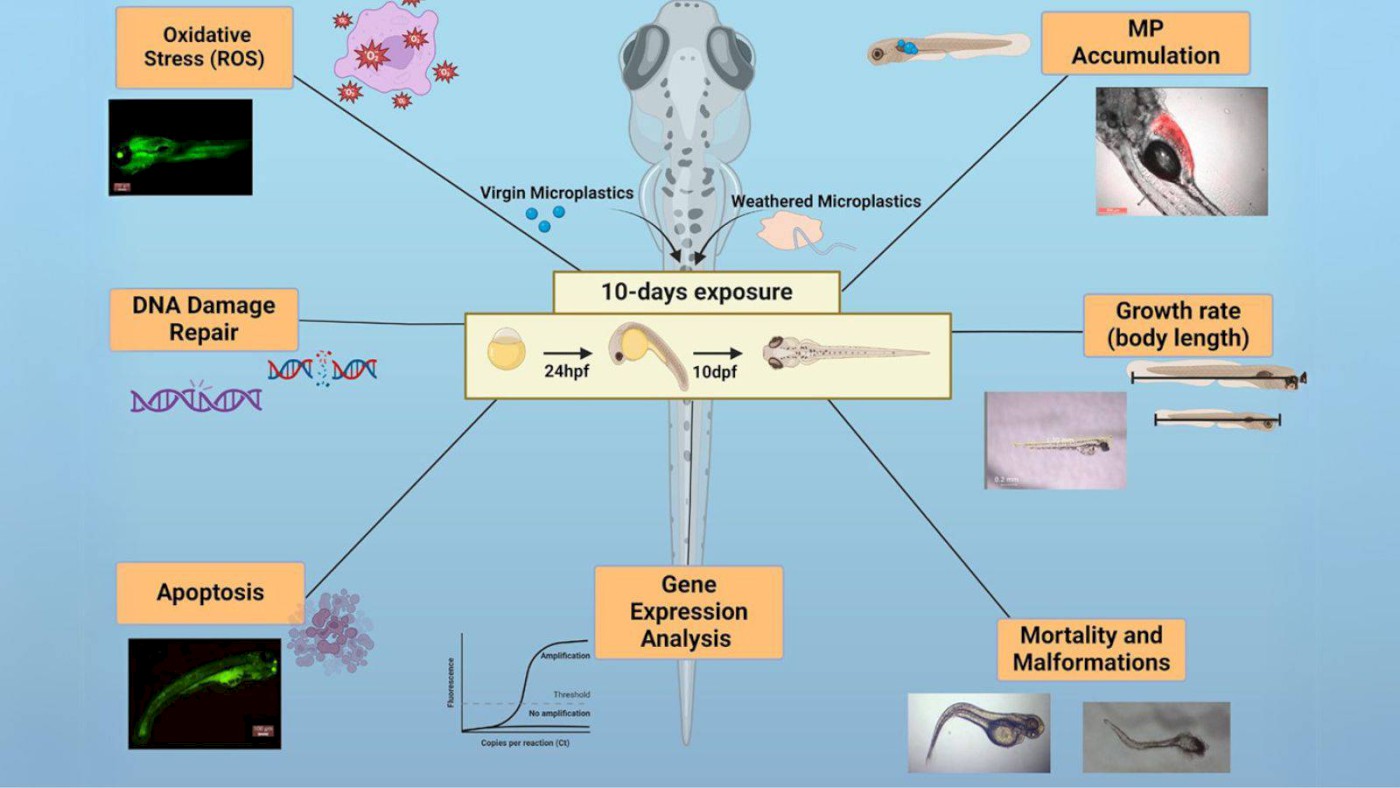3 December 2024
Weathered Microplastics Increase Zebrafish Larvae Mortality by 82 per cent

A study on the toxic effects of microplastics (MPs) under environmentally realistic conditions, particularly focusing on their impact on zebrafish larvae, revealed that weathered MPs are significantly more harmful than virgin MPs, with up to 82% mortality compared to 20% in virgin MPs.
Investigation revealed that solid microplastics (MPs) at environmentally relevant levels can cause adverse effects and impede the developmental progression of zebrafish. The predominant morphological abnormalities observed across all microplastic treatment conditions were spinal and tail defects. These abnormalities resulted in abnormal development, impaired swimming ability, and ultimately, premature mortality within 5-6 days post-fertilisation.
The study also revealed DNA damage, indicated by alterations in gene expression associated with DNA repair mechanisms. When oxidative stress responses and intrinsic repair mechanisms were faltered, zebrafish larvae underwent programmed cell death (apoptosis), disrupting critical repair pathways like Homologous Recombination (HR) and Non-Homologous End Joining (NHEJ). Additionally, the study found that weathering processes can increase the toxicity of microplastics by enhancing pollutant adsorption and leaching of additives. These findings emphasise the need to consider the environmental impact of microplastics and develop strategies to mitigate their harmful effects on aquatic ecosystems.
The findings were part of a research paper, "Impact of Virgin and Weathered Microplastics on Zebrafish: Bioaccumulation, Developmental Toxicity, and Molecular Pathway Disruptions," co-authored by our PhD scholar Abdulkhalik Mansuri, alumna Charvi Trivedi, Integrated MS Class of 2024, and Professor Ashutosh Kumar. It has been published in the Science of the Total Environment, an international multidisciplinary natural science journal.



